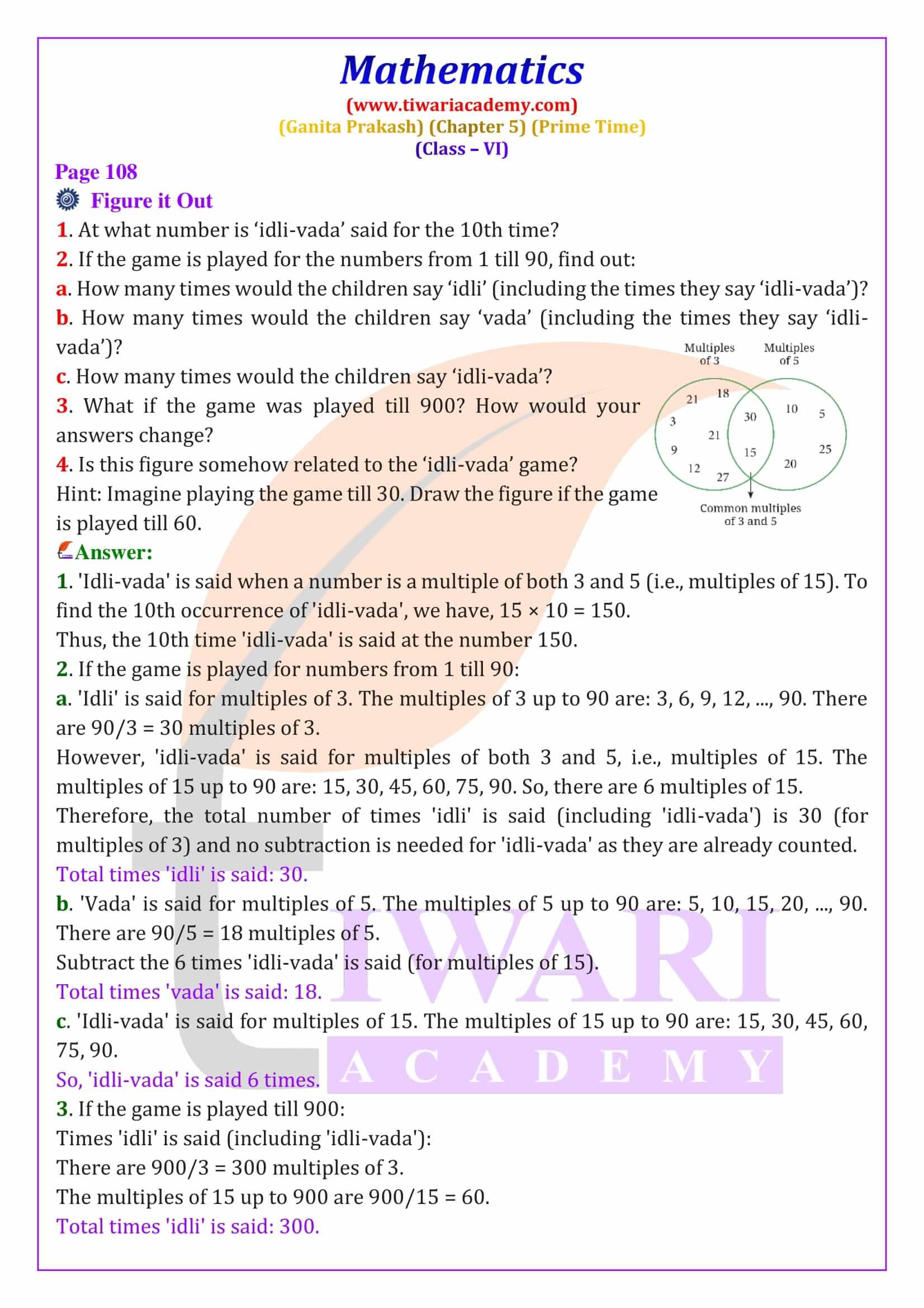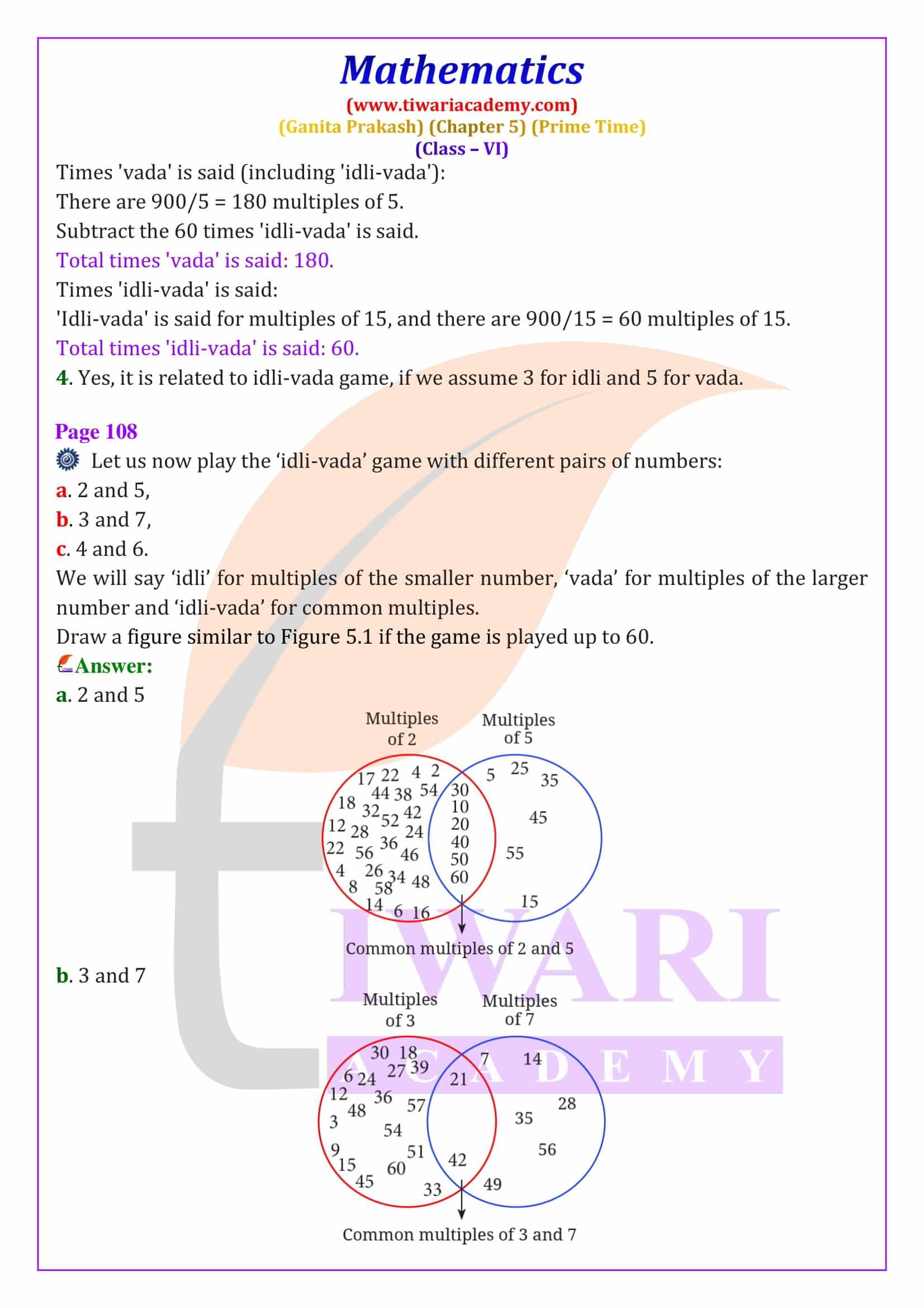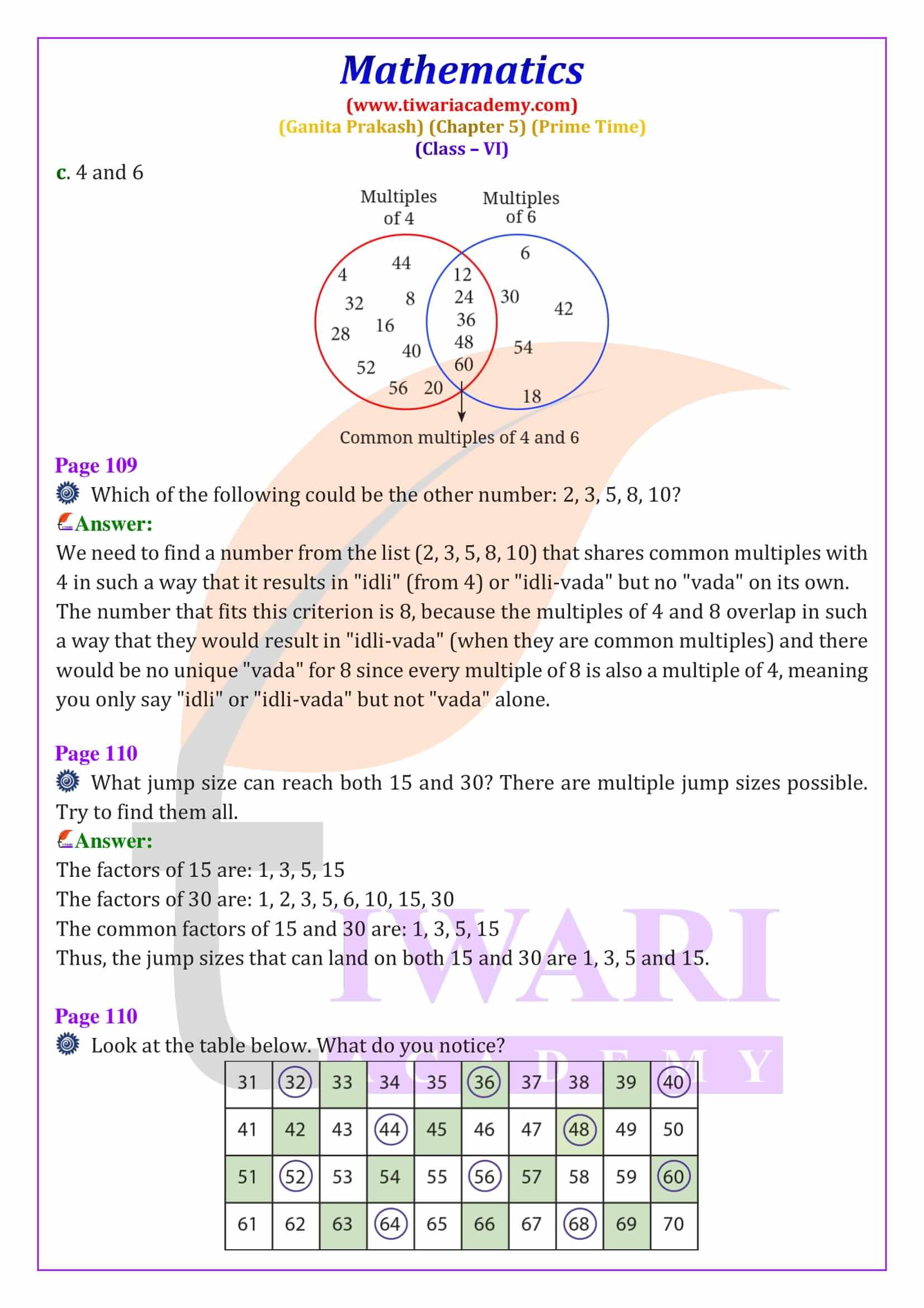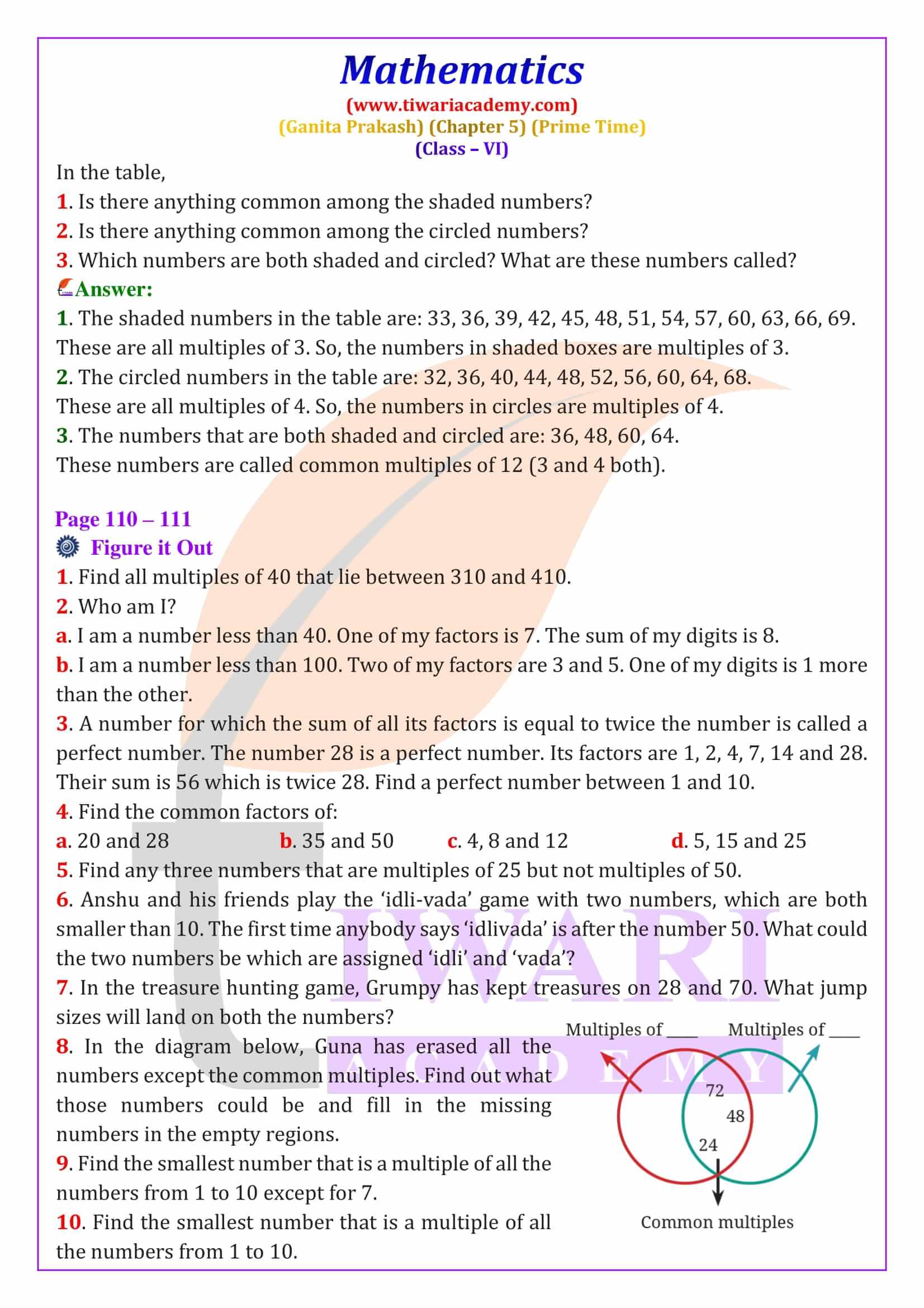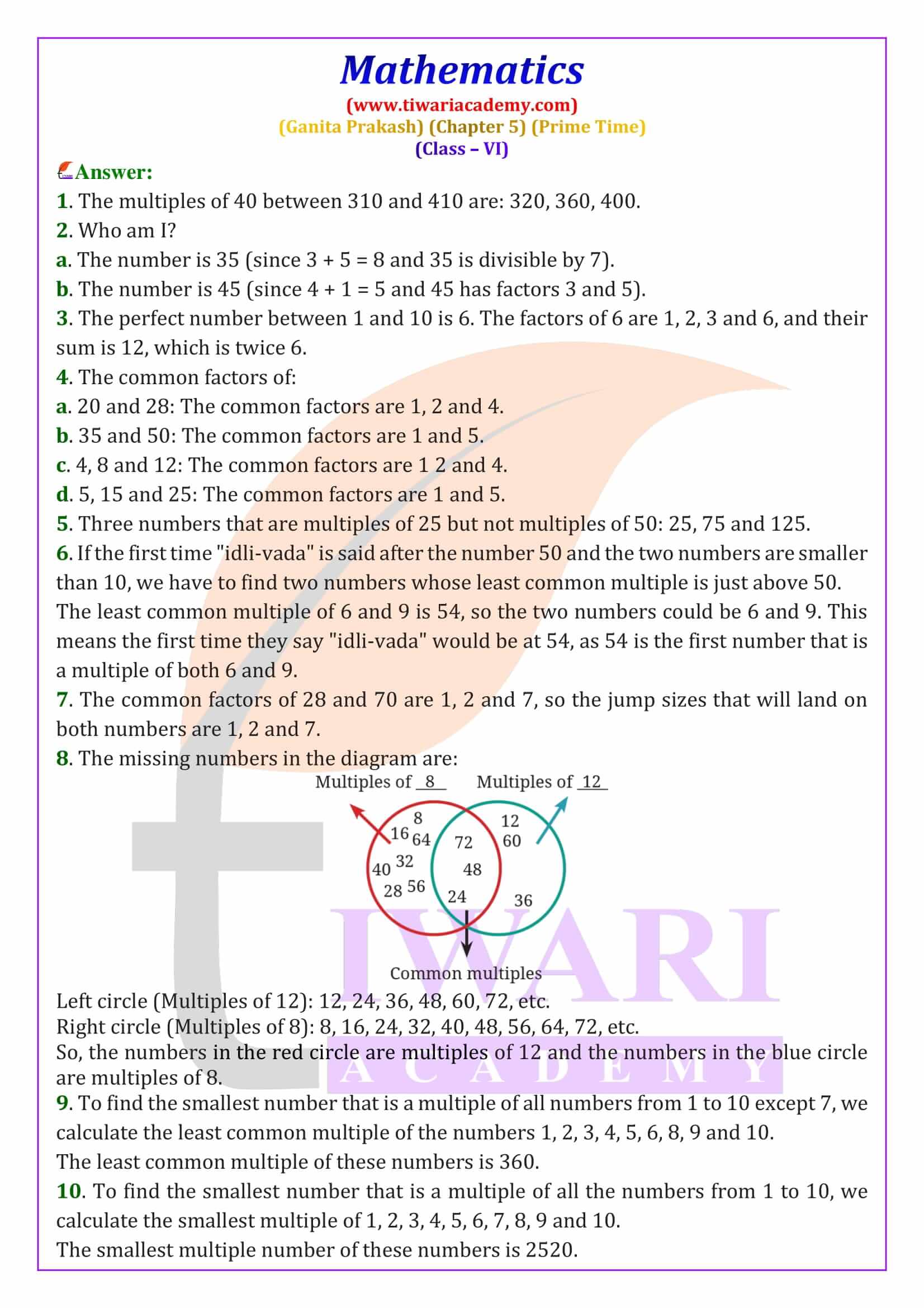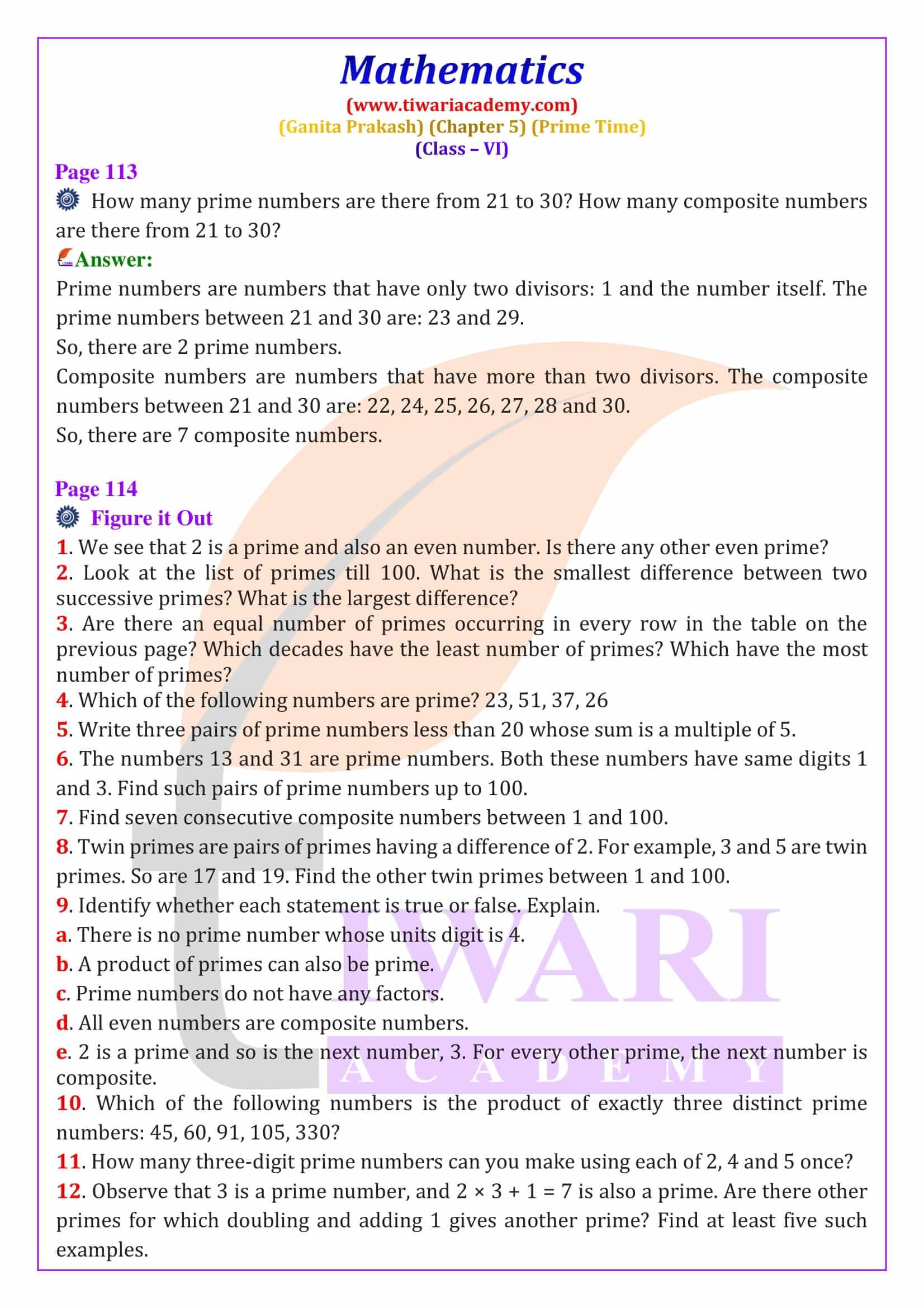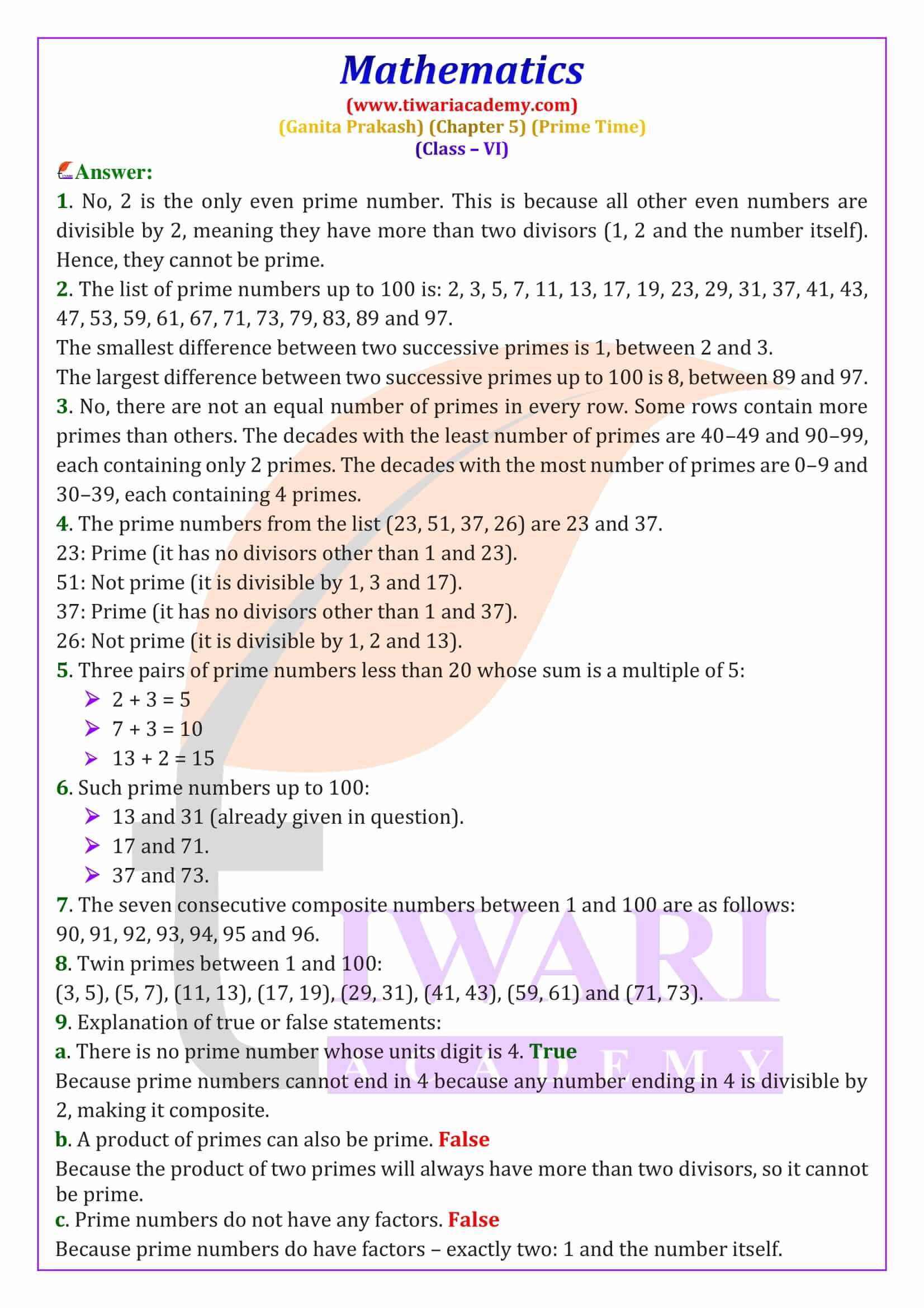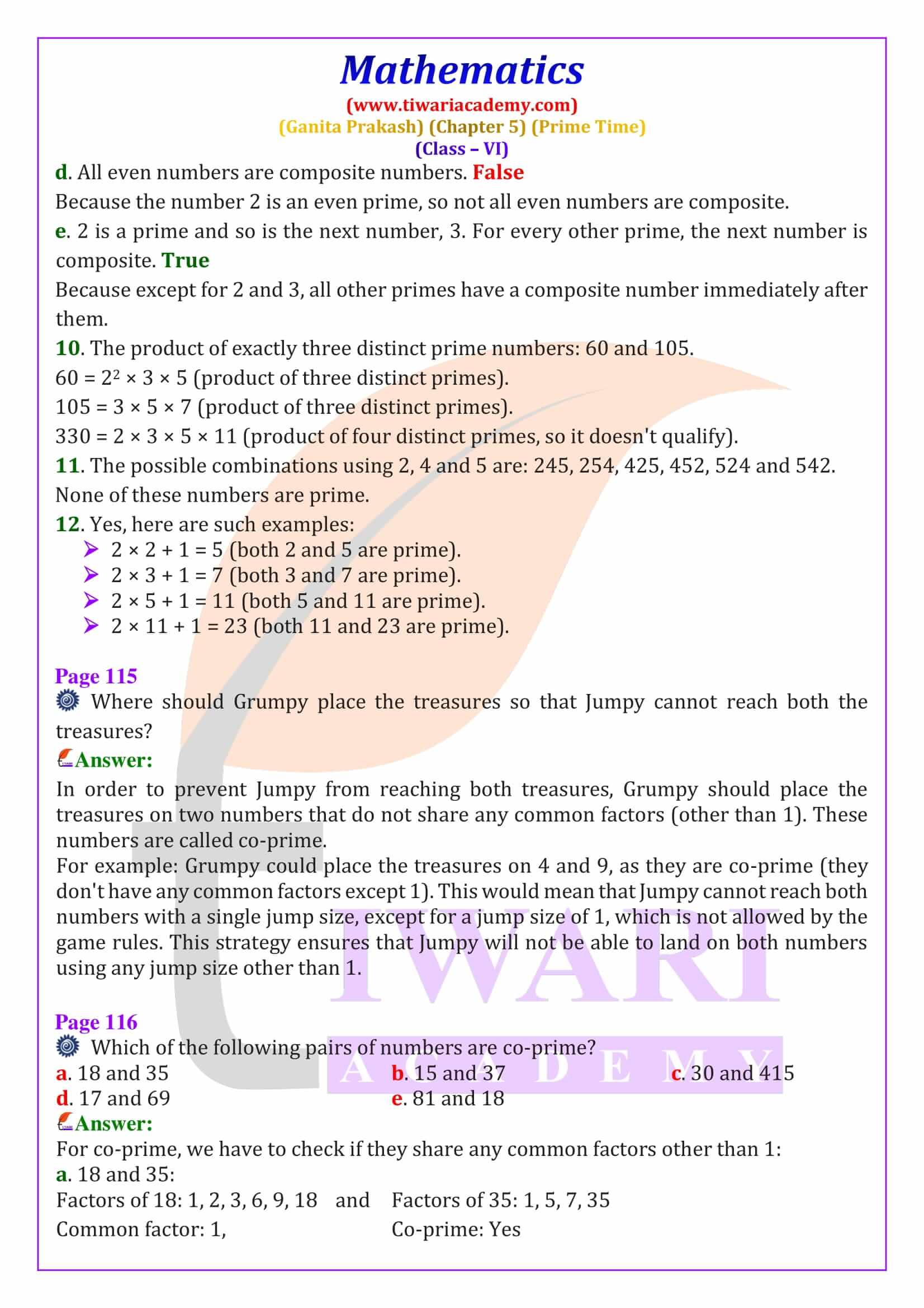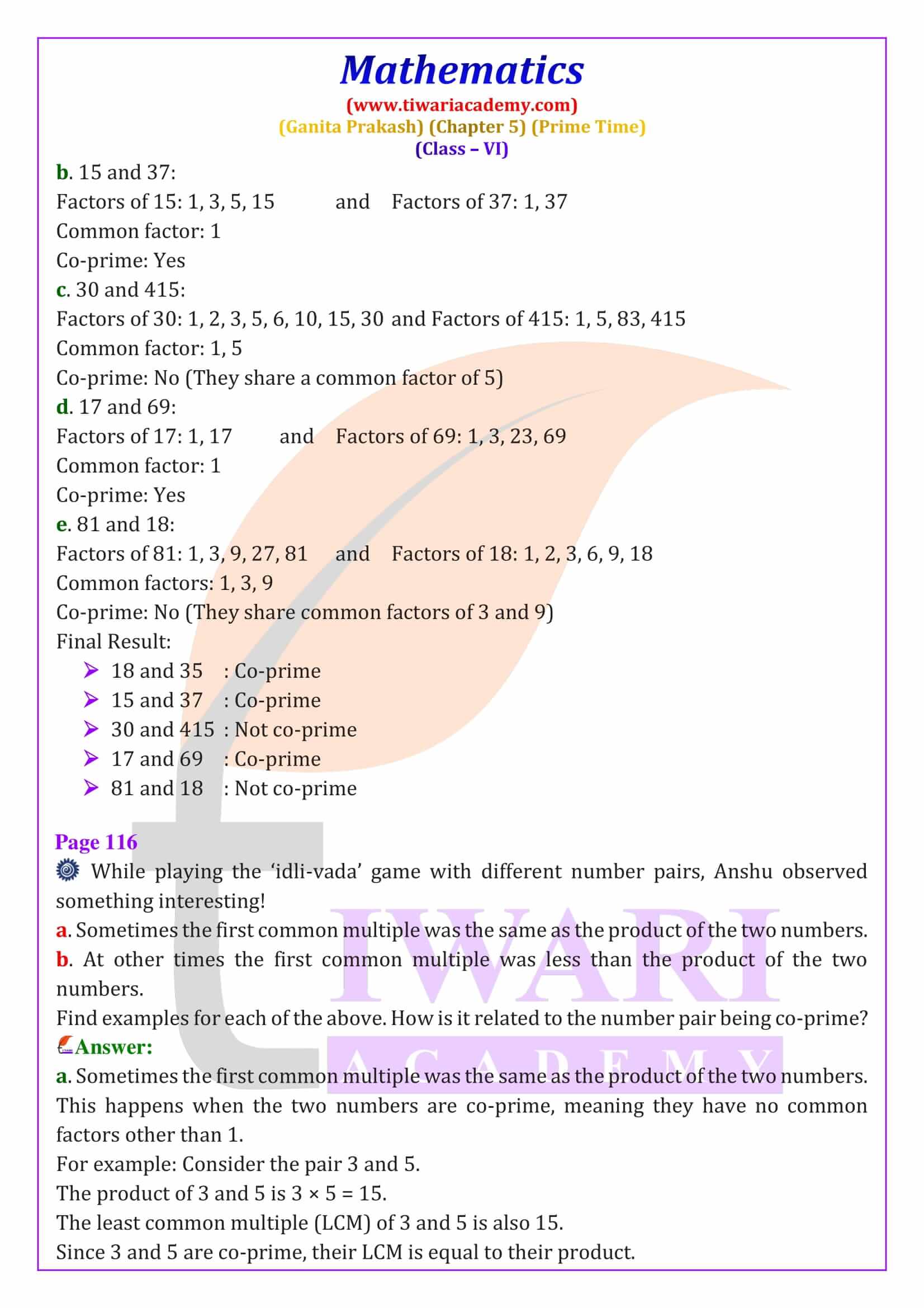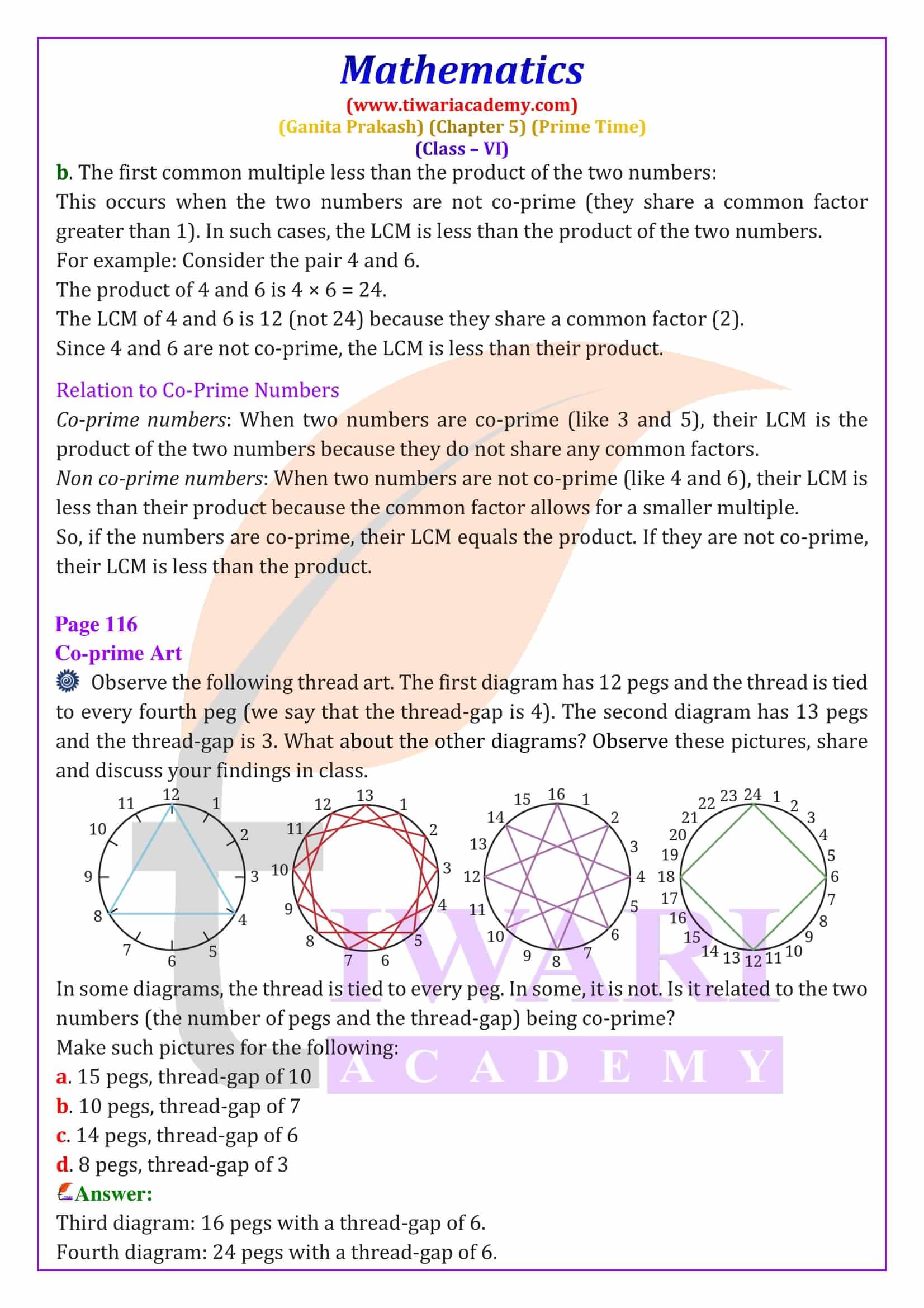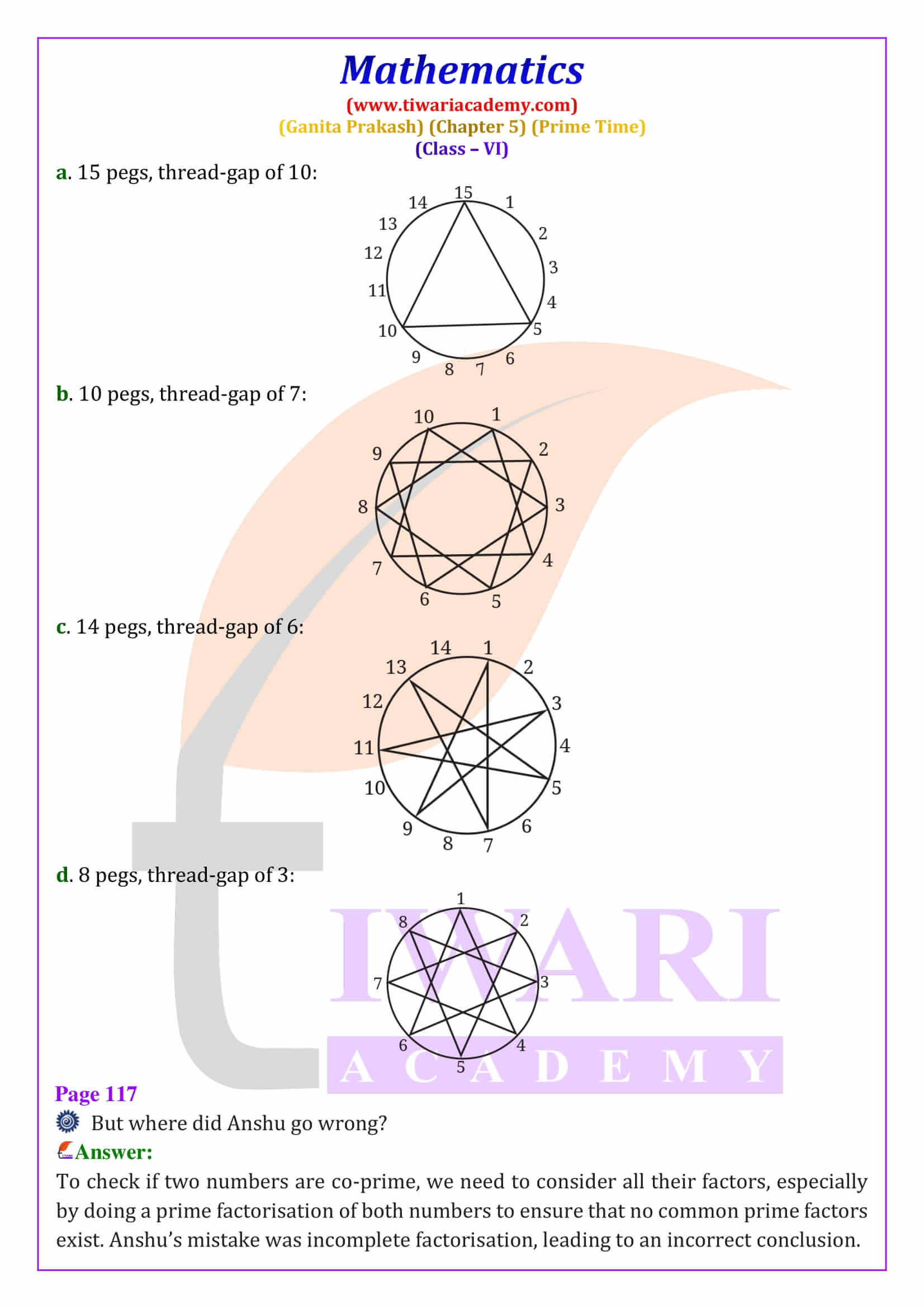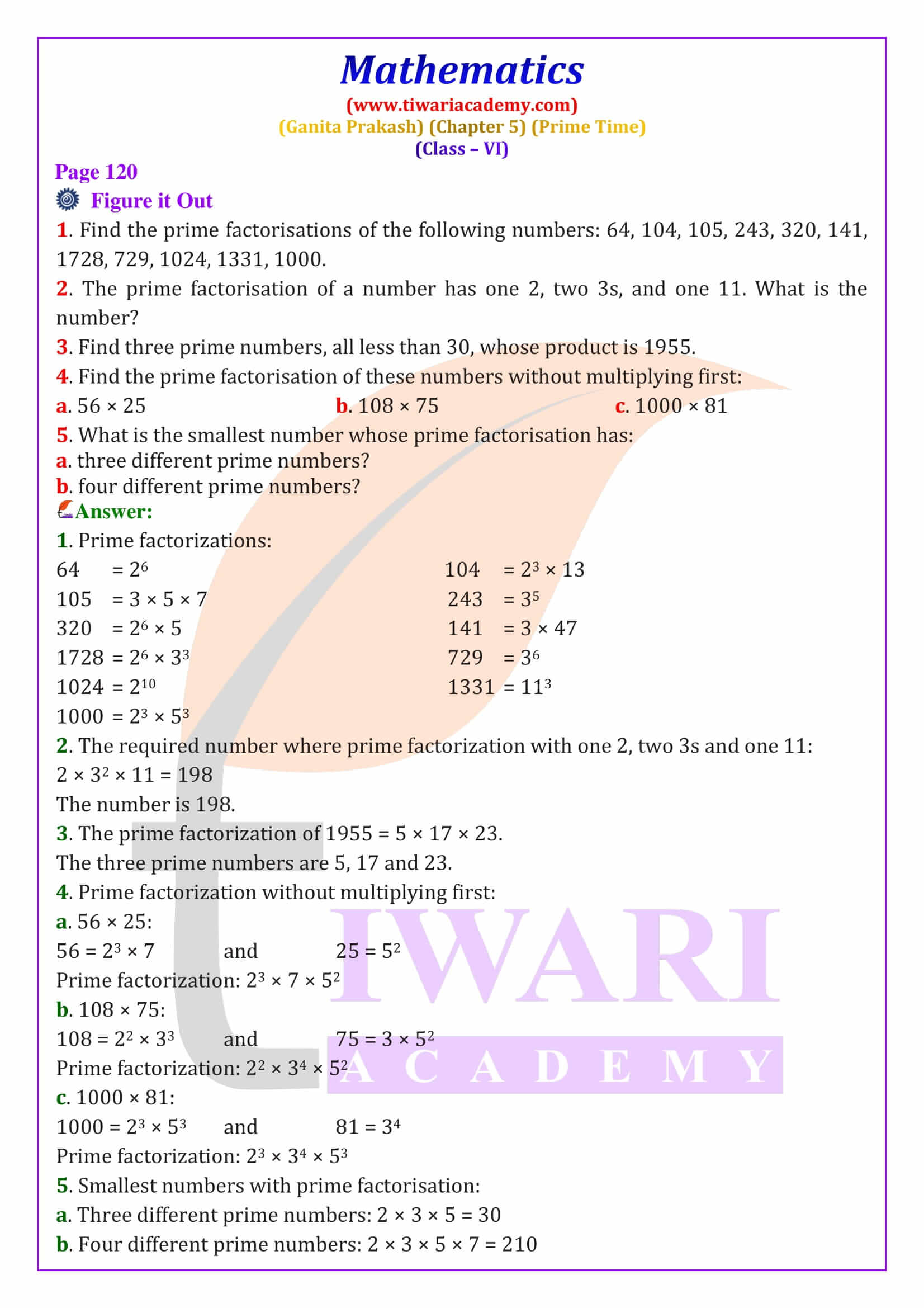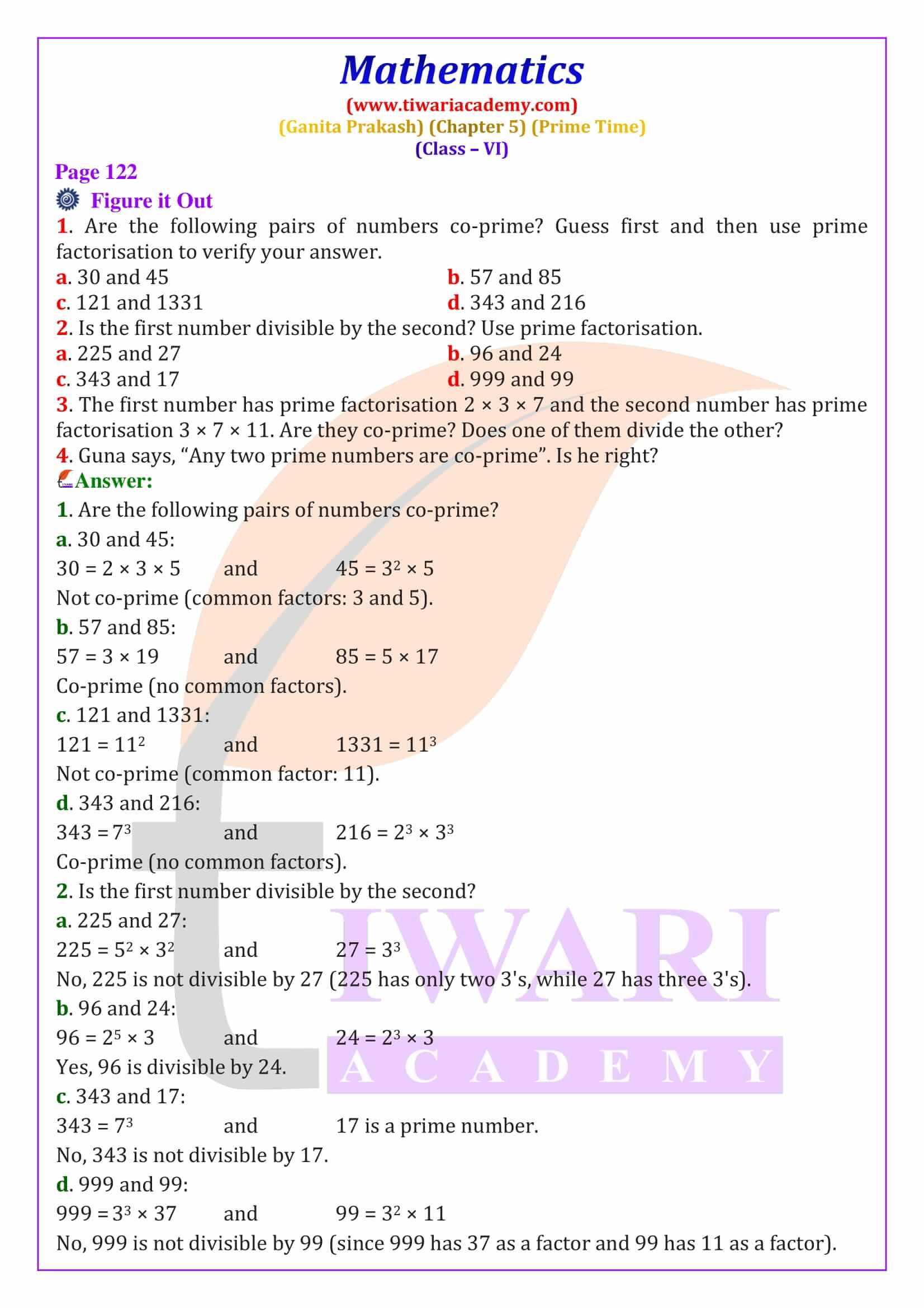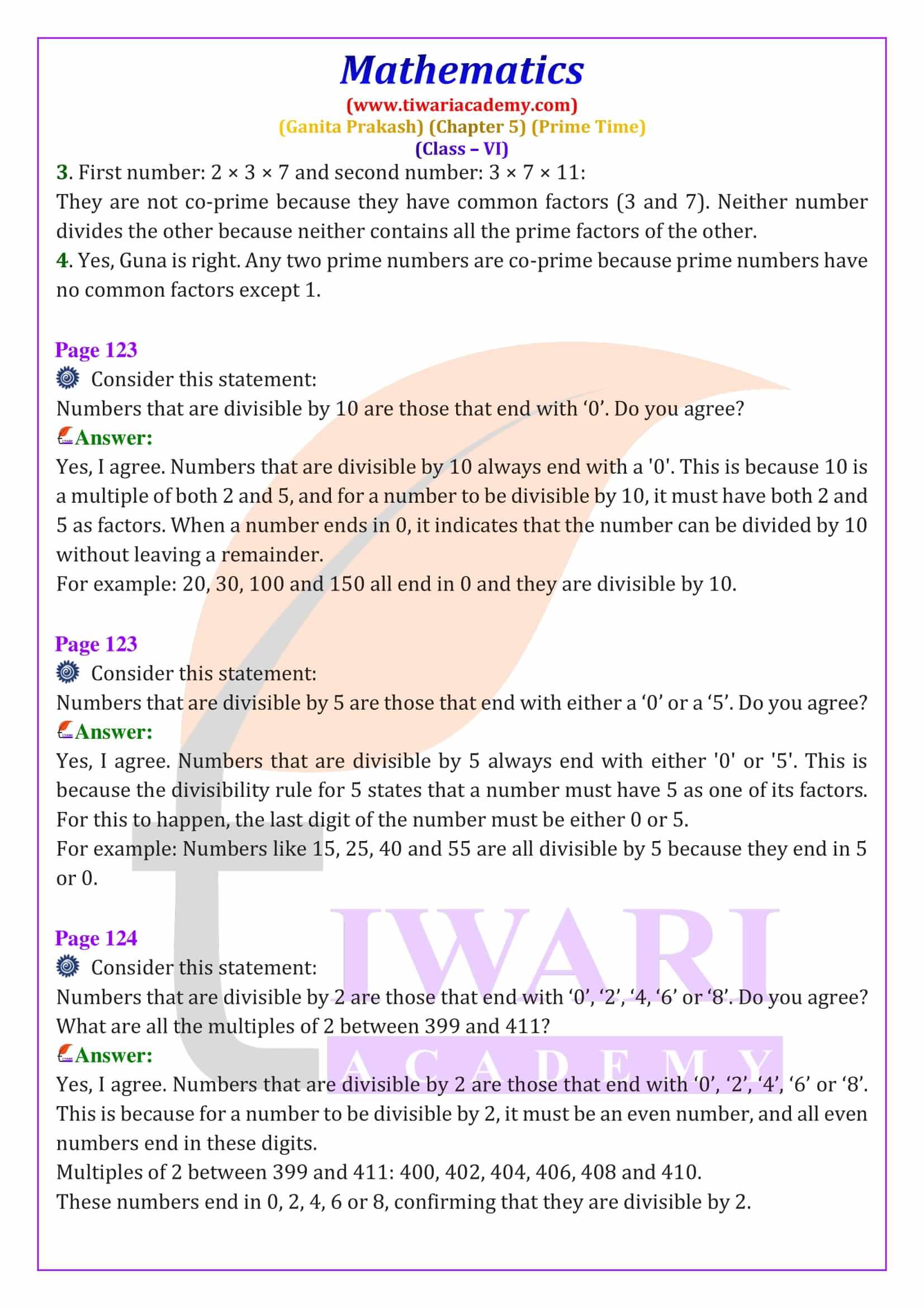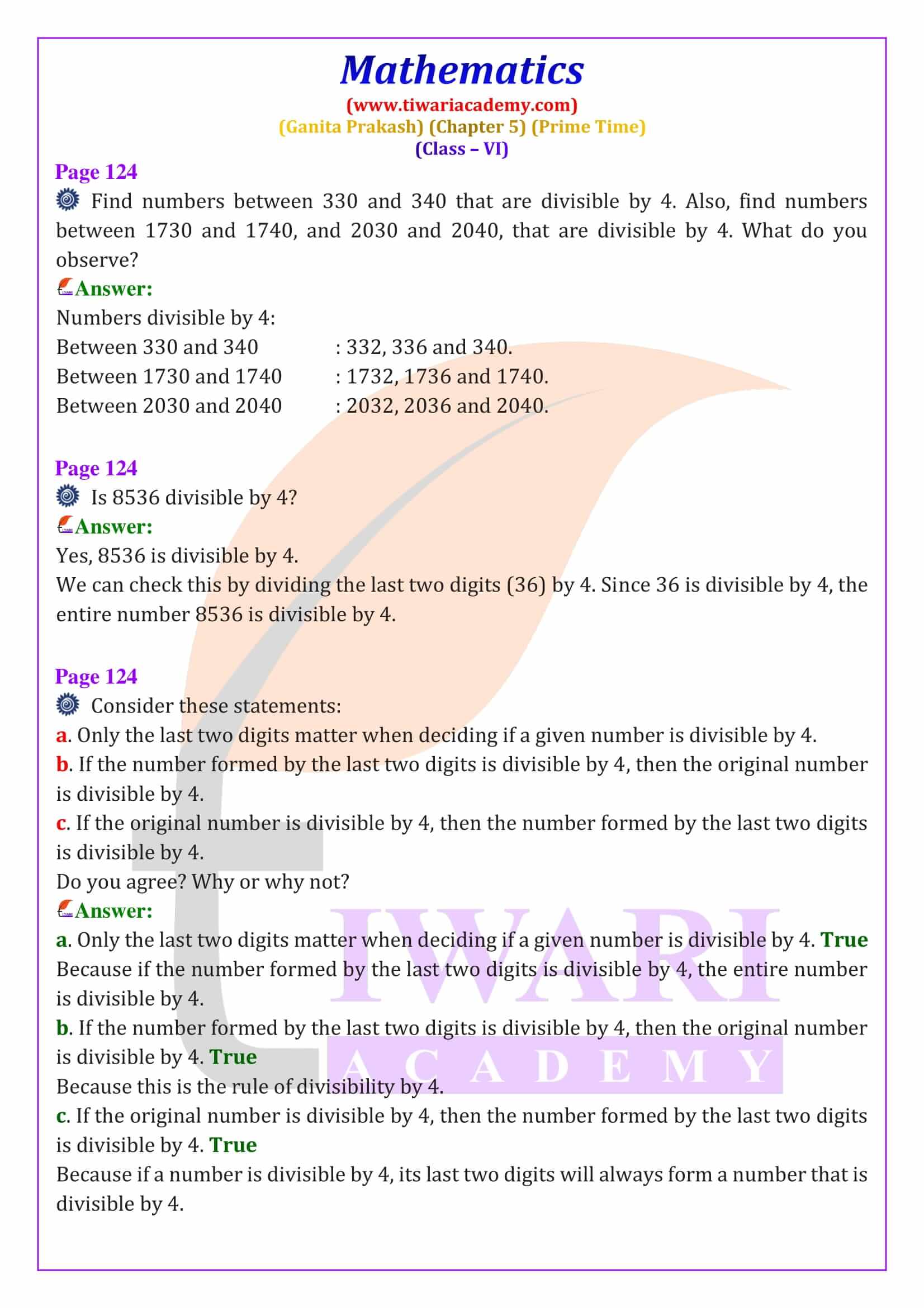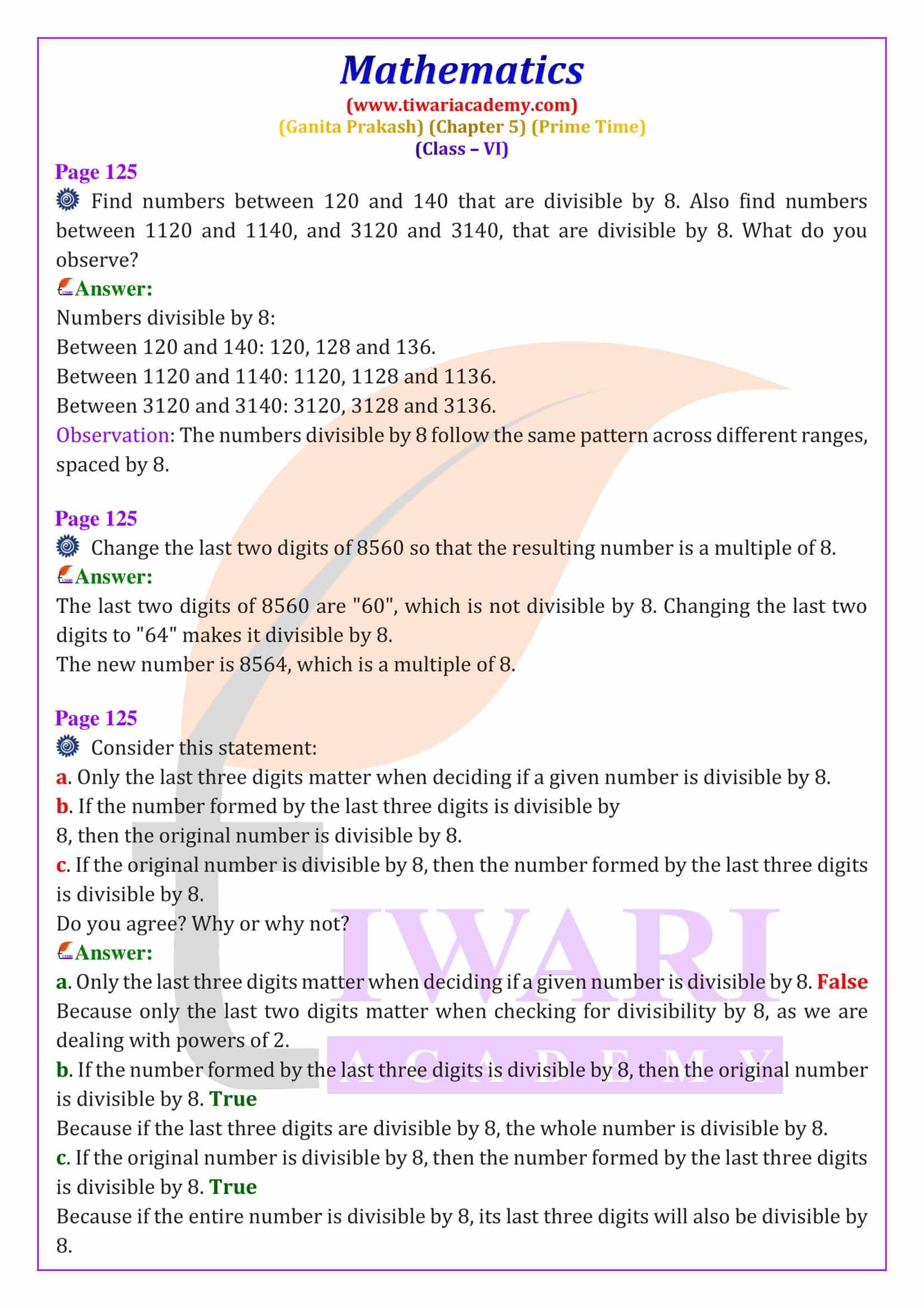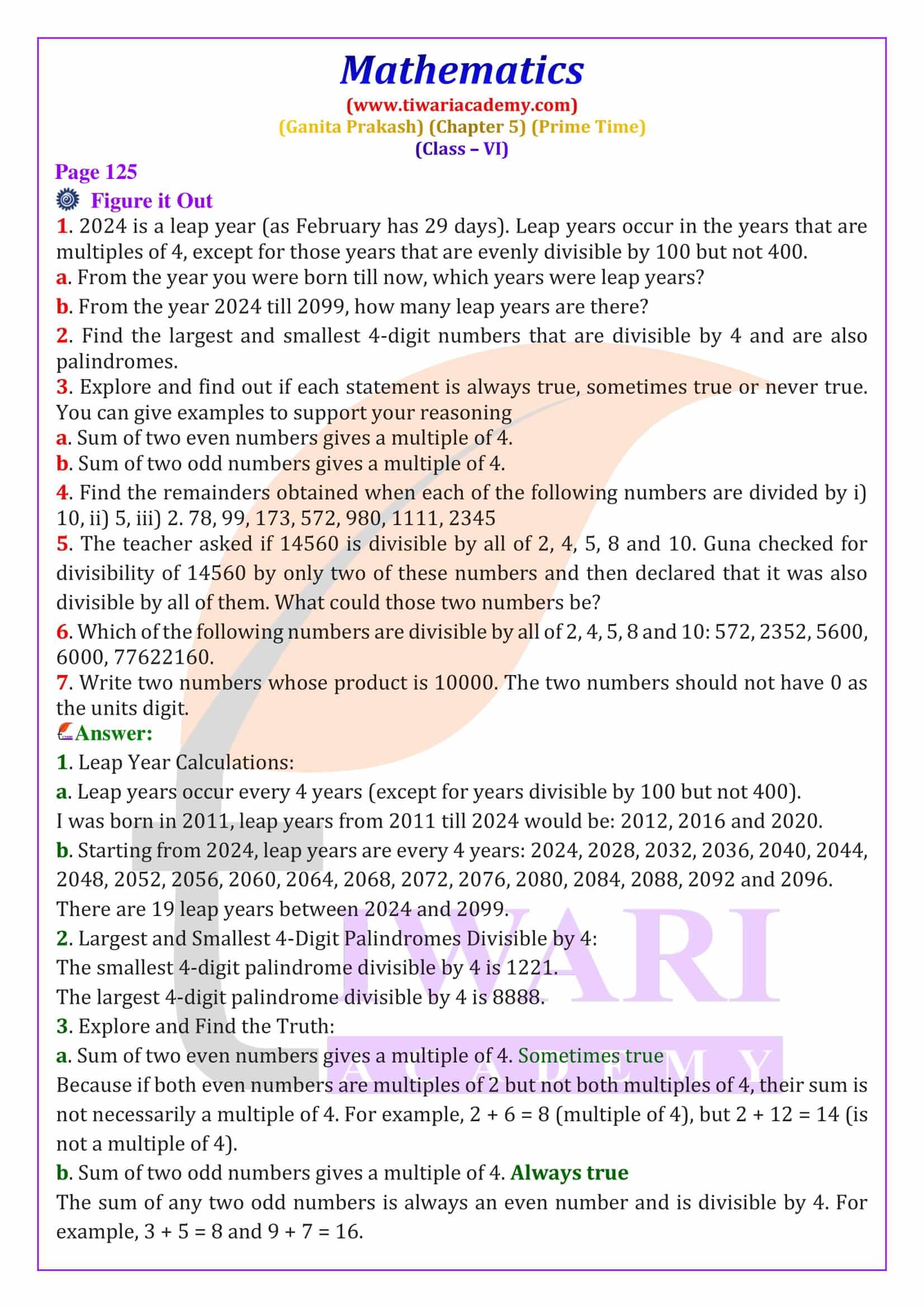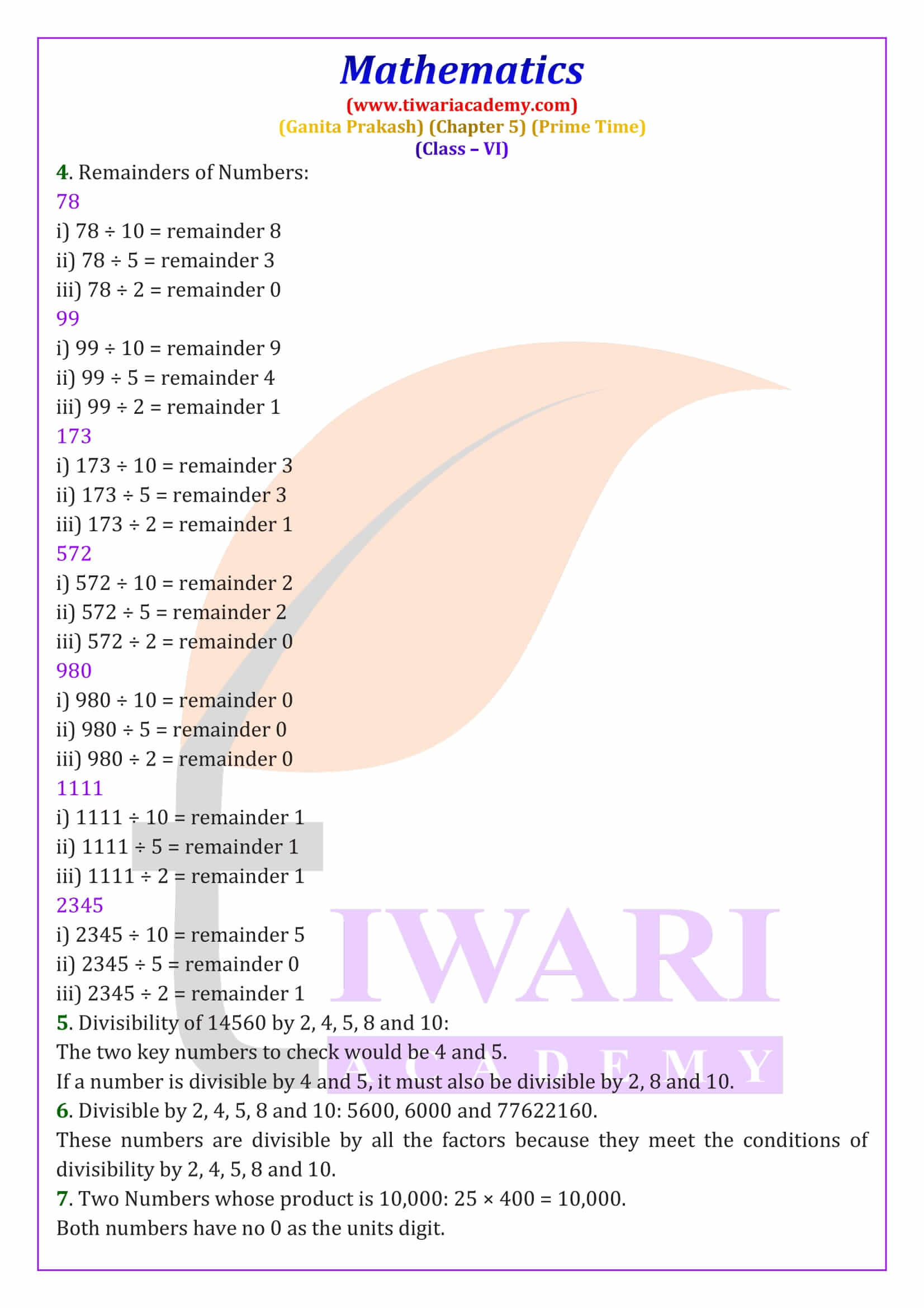NCERT Solutions for Class 6 Maths Ganita Prakash Chapter 5 Prime Time updated for academic session 2025-26. Dive into prime numbers, factors and multiples with detailed explanations for better clarity.
Class 6 Maths Ganita Prakash Chapter 5 Prime Time
Introduction to Prime Numbers and Factors
In Class 6 Maths Ganit Prakash chapter 5, we explore prime numbers, factors and multiples. The idea of prime numbers is introduced with simple examples to help you identify them easily. Prime numbers are numbers greater than 1, which have no other divisors except 1 and themselves. For example, 2, 3, 5 and 7 are prime numbers. Understanding prime numbers is important because they are the building blocks of all other numbers. You can find more detailed solutions and exercises for this chapter on the Tiwari Academy website.
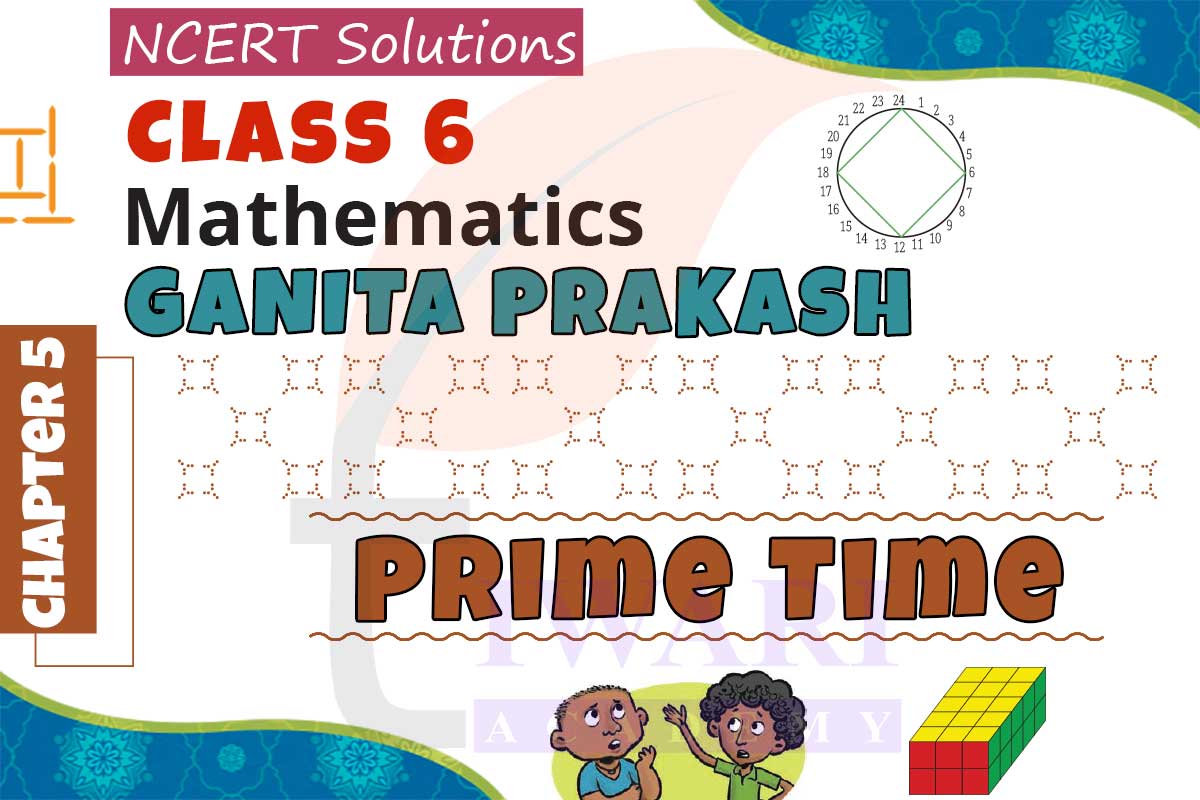
Factors and Multiples
Factors are numbers that divide another number exactly without leaving a remainder. For example, the factors of 6 are 1, 2, 3 and 6. Multiples, on the other hand, are numbers obtained by multiplying a number by whole numbers. For example, the multiples of 3 are 3, 6, 9, 12 and so on. Understanding factors and multiples helps us solve many math problems, including finding common factors and multiples between two numbers.
Common Factors and Multiples
Common factors are factors that two or more numbers share. For example, the common factors of 12 and 18 are 1, 2, 3 and 6. Similarly, common multiples are multiples that are shared by two or more numbers. Finding the least common multiple (LCM) and greatest common divisor (GCD) is an important part of this chapter. These concepts help in solving word problems and can be very useful in real life.
The Game of Prime and Composite Numbers
Through games and activities, students learn to distinguish between prime and composite numbers. Composite numbers are numbers that have more than two factors, such as 4, 6, 8 and 9. In the chapter, there is a fun game where students replace numbers divisible by 3 with “idli” and numbers divisible by 5 with “vada.” This game helps in understanding the concept of multiples and common multiples of 3 and 5.
Prime Factorisation
Prime factorisation is a method where a composite number is expressed as a product of prime numbers. For example, 60 can be written as 2 × 2 × 3 × 5. This concept helps in solving problems related to LCM and GCD. The process of breaking down numbers into their prime factors is useful in many mathematical problems. It is important to practice this skill with different numbers to become comfortable with it.
Co-prime Numbers
Co-prime numbers are numbers that have no common factors other than 1. For example, 8 and 15 are co-prime because they do not share any common factors except 1. In this chapter, we also explore co-prime numbers and learn how they can be identified through prime factorization. This concept helps in many higher-level mathematical problems, such as fractions and ratios.
Revision and Practice
The chapter 5 of class 6 Maths, concludes with various exercises that help students apply what they have learned. Through practice, students can strengthen their understanding of prime numbers, factors, multiples and prime factorisation. For more detailed NCERT solutions and additional practice questions, students should refer to Tiwari Academy, which provides comprehensive solutions to all the exercises in this chapter.
For a complete understanding and solutions, visit the Tiwari Academy website and explore their NCERT solutions for Class 6 Maths Ganita Prakash Chapter 5.
What is the main motive of studying Ganit Prakash chapter 5 Prime Time in class 6 Maths?
The motive of studying Chapter 5: Prime Time in Class 6 is to help students understand the concepts of prime numbers, factors, and multiples. By learning to distinguish between prime and composite numbers, students gain a foundational skill for higher-level mathematics. The chapter introduces prime factorization, which is crucial for simplifying numbers and solving problems involving the LCM (Least Common Multiple) and GCD (Greatest Common Divisor). These concepts are widely applicable in solving real-world problems, enhancing logical thinking, and preparing students for more advanced topics like fractions, ratios, and algebraic expressions.
Is Class 6 Maths Ganit Prakash Chapter 5 easy?
Yes, Class 6 Maths Ganit Prakash Chapter 5 Prime Time can be considered easy for students who have a basic understanding of numbers, factors and multiples. The chapter 5 introduces concepts like prime numbers, composite numbers and prime factorisation through simple explanations and fun activities like the “idli-vada” game. While these concepts might be new, with practice, students generally find it easy to grasp. Additionally, the step-by-step approach in exercises and examples makes the learning process smoother. For additional help, solutions from Tiwari Academy provide clear guidance, making the chapter more approachable for students.
Can I complete Ganit Prakash Chapter 5 in 1 day for my Class 6 Maths Exams?
Yes, you can complete Ganit Prakash Chapter 5: Prime Time in one day if you focus and dedicate sufficient time to it. The chapter is relatively straightforward, covering topics like prime numbers, factors, multiples and prime factorisation. Here’s a suggested approach to complete it in a day:
Morning: Read the chapter thoroughly, focusing on the key concepts.
Afternoon: Practice the exercises and solve problems related to factors and multiples.
Evening: Revise with focus on prime factorization and ensure you understand the methods.
Night: Review all key points and check solutions from Tiwari Academy if needed.
With focused study, completing the chapter in one day is manageable!
